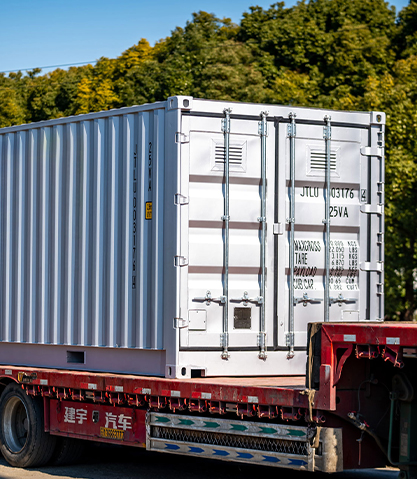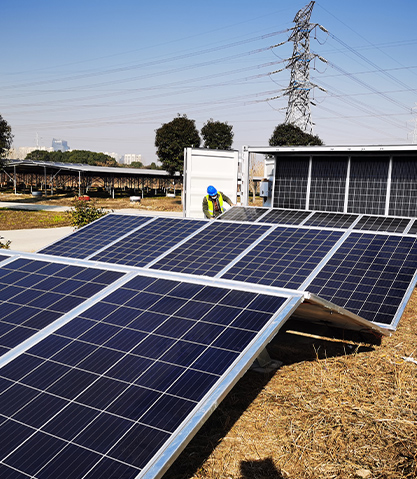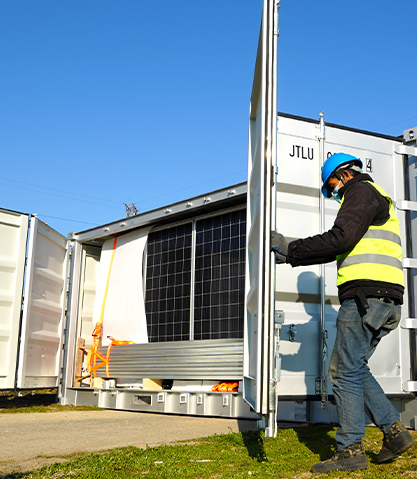The global transition to renewable energy demands not only large-scale fixed infrastructure but also versatile, rapid-deployment solutions for a wide array of scenarios. Enter the concept of the Solar Fold Mobile Grid—an integrated system comprising compact, folding photovoltaic (PV) panels, energy storage, power management, and grid-forming capabilities, all packaged for extreme mobility. This technology moves beyond simple portable solar generators to create a resilient, modular, and rapidly deployable microgrid solution. This article explores the architecture, key technologies, applications, and transformative potential of mobile, folding solar grid systems for emergency response, remote operations, and military use.
Content
1. Introduction: The Need for Mobile, Resilient Power
Traditional power infrastructure is vulnerable. Natural disasters can destroy grids, remote operations lack access to reliable electricity, and military missions require energy independence. While diesel generators are a common solution, they are noisy, require a constant fuel supply, and emit pollutants. The Solar Fold Mobile Grid addresses these shortcomings by offering a silent, renewable, and logistically simple alternative. It represents the convergence of advancements in solar panel technology, battery chemistry, and power electronics into a single, transportable package.
2. System Architecture: More Than Just a Panel
A true Solar Fold Mobile Grid is an integrated system of several key subsystems:
-
Folding Photovoltaic Array:
-
Technology: Typically uses high-efficiency, flexible monocrystalline silicon or thin-film (e.g., CIGS) solar cells mounted on a durable, foldable substrate. This allows the panel to be folded into a compact, ruggedized case for transport and unfolded to a large surface area for maximum energy capture.
-
Design: Arrays are designed with integrated hinges and reinforced corners. They often include built-in handles and mooring points for stability in windy conditions. The best systems can be set up by a single person in minutes.
-
-
Integrated Energy Storage System (ESS):
-
Technology: Lithium-ion (NMC or LiFePO4) batteries are the standard due to their high energy density and cycle life. LiFePO4 (LFP) chemistry is often preferred for its superior safety, thermal stability, and longer lifespan.
-
Function: The battery bank stores solar energy for use during nighttime or cloudy periods, ensuring a continuous power supply. It also provides critical surge power for starting motors or other high-inrush devices.
-
-
Smart Power Management & Inverter System:
-
Components: This is the "brain" of the operation. It includes:
-
Maximum Power Point Tracking (MPPT) Charge Controller: Optimizes the energy harvest from the solar array.
-
Grid-Forming Inverter: Creates a stable AC microgrid (e.g., 120V/240V), matching the quality of a traditional utility grid. Advanced models feature pure sine wave output for sensitive electronics.
-
System Controller: A digital interface (often with Bluetooth/Wi-Fi) for monitoring input/output power, battery state of charge, and system health.
-
-
-
Mobility Platform:
-
The entire system is integrated into a mobile platform, which can range from a heavy-duty wheeled pelican case for man-portable units to a trailer-based system that can be towed by a vehicle for larger, community-scale power.
-
3. Key Advantages and Features
-
Rapid Deployment: Systems can be transported to a site and be generating power within minutes, a critical factor in disaster response.
-
Silent and Zero-Emission Operation: Enables power generation in sensitive environments without giving away a position (military) or causing noise pollution (camping, events).
-
Energy Independence: Eliminates the need for a constant and vulnerable fuel supply chain.
-
Scalability and Modularity: Multiple units can often be connected in parallel to scale up power (kW) and energy storage (kWh) capacity, creating a larger microgrid.
-
Resilience: Provides a robust power source for critical communications, medical equipment, and lighting when the main grid is down.
4. Critical Applications
The versatility of the Solar Fold Mobile Grid makes it applicable across numerous sectors:
-
Disaster Response and Humanitarian Aid:
-
Use Case: Deploying to areas hit by hurricanes, earthquakes, or floods to power emergency field hospitals, water purification systems, communication equipment, and lighting for aid distribution centers.
-
Benefit: Provides immediate power before infrastructure can be repaired, without the delay and cost of fueling generators.
-
-
Defense and Military Operations:
-
Use Case: Powering forward operating bases (FOBs), command posts, surveillance equipment, and communications arrays. Significantly reduces the number of dangerous fuel convoys required.
-
Benefit: Enh operational capability, reduces logistical footprint, and improves stealth.
-
-
Remote Industrial and Construction Sites:
-
Use Case: Providing power for off-grid mining exploration, scientific research stations, agricultural operations, and construction sites where running grid lines is impractical or cost-prohibitive.
-
Benefit: Lowers operational costs and environmental impact compared to running diesel generators 24/7.
-
-
Events and Recreational Use:
-
Use Case: Powering food trucks, outdoor concerts, film sets, and remote camping trips (e.g., for overlanding or RVing).
-
Benefit: Offers clean, silent power for vendors and enhances the outdoor experience without the hum of a generator.
-
5. Design Challenges and Technological Considerations
-
Durability: The system must be ruggedized to withstand harsh environmental conditions, including dust, moisture (IP67 rating), shock, and vibration during transport.
-
Weight and Portability: There is a constant trade-off between power capacity, battery size, and weight. Advanced composites and lightweight materials are crucial.
-
Efficiency: High-efficiency solar cells and MPPT controllers are essential to maximize energy harvest from a limited unfolded area.
-
Thermal Management: The enclosed battery and electronics require effective passive or active cooling systems to prevent overheating, especially in hot climates.
-
Grid Integration: For some applications, the ability to safely "island" from the main grid or even feed power back (via a grid-tie inverter) is a valuable feature.
6. The Future: Integration and Autonomy
The future of the Solar Fold Mobile Grid lies in greater intelligence and integration:
-
Hybridization: Integration with other renewable sources, such as a small, collapsible wind turbine, to ensure power generation in diverse weather conditions.
-
Smart Microgrids: Units will feature advanced software that allows them to autonomously connect with other units, prioritize loads, and manage energy flow based on predefined rules.
-
Drone Deployment: For extremely remote or dangerous terrain, compact systems could be designed for deployment by unmanned aerial vehicles (UAVs).
-
Advanced PV Technologies: Integration of emerging technologies like perovskite solar cells could lead to even lighter, more efficient, and cheaper folding arrays.
7. Conclusion
The Solar Fold Mobile Grid is far more than a simple portable panel; it is a paradigm shift in how we think about energy access. It embodies the principles of resilience, sustainability, and adaptability. By packaging the functionality of a solar farm into a mobile, rapidly deployable format, this technology provides a critical tool for enhancing security, supporting humanitarian efforts, and enabling operations anywhere on the planet. As technology continues to improve, these systems will become more powerful, affordable, and ubiquitous, fundamentally changing our approach to off-grid and emergency power generation.


 English
English 中文简体
中文简体 عربى
عربى


